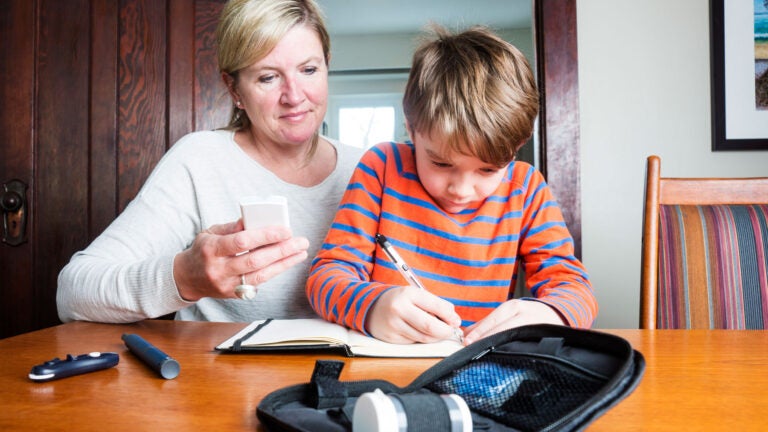
How diabetes passes from mothers to children
Keck School of Medicine of USC researcher examines the causes of childhood diabetes
Type 2 diabetes, once known as “adult onset diabetes” because it was virtually unknown in children, has bloomed with malice in kids as young as 10 years old. But the causes, researchers say, aren’t as simple as kids eating too many sweets.
Katie Page, an associate professor of medicine in the Division of Endocrinology and Diabetes at the Keck School of Medicine of USC, leads some of the most advanced studies trying to find causes and potential treatment of childhood diabetes. She said one group of children is particularly vulnerable.
“Children who are born to mothers who are obese or diabetic face up to tenfold higher risk,” she said. “We’re trying to understand why. It’s not just genetic.”
It turns out that embryos in the womb of a diabetic or obese mother develop in an altered nutritional environment.
“It contributes to changes in the areas in the brain that control appetite,” she said. “That has a lot to do with obesity risk, and the risk of Type 2 diabetes.” This in turn raises the risk of disease of the heart, eyes, kidney, nerves, even ulcerations in hands and feet that can lead to infection and amputation.
Diabetes is hard on middle-agers, but what are the causes of childhood diabetes?
Page said diabetes is hard enough on middle-agers who develop the disease, but “a lot of these risks are now starting at 10 to 12 years old. It means life-altering changes in lifestyle at that age, and they’re going to be exposed to risk a lot longer through their lives.”
As the recipient of one of the largest grants ever from the American Diabetes Association, Page manages several studies that focus on childhood diabetes, and how it may be passed from mother to child.
“The work is multidisciplinary, in part because it’s translational — turning research findings in animals into studies in children, and later into clinical treatment for patients — so it requires a lot of different areas of expertise,” she said.
In addition to USC researchers Britni Belcher, Sebastien Bouret, Tom Buchanan, Michael Goran and Scott Kanoski, Page’s team also works with Anny Xiang at Kaiser Permanente, which has a huge database of detailed patient information — collected with patients’ consent — that reaches back for years.
“We know extensive details about the mom’s pregnancy,” Page said. “We how much weight she gained, her glucose levels — so we know if she had gestational diabetes or not. We bring back kids who are now age 7 to 10, some who were exposed to mother with gestational diabetes and some who were not.”
The researchers use non-invasive methods, such as radiation-free brain imaging to study how these children’s brains respond to glucose, what their appetite regulation is like and if there are differences in how they regulate glucose and insulin levels — factors involved in risk for Type 2 diabetes.
Causes of childhood diabetes, and how to prevent it
The next step, Page said, would be to study possible intervention strategies, such as exercise programs, which have been shown to mitigate risk for diabetes in animals born to mothers with obesity or diabetes. The goal is to see how the children respond as they head into puberty, when Type 2 diabetes often develops.
Another project studies how the brains of college-age students are affected by sugar, as well as artificial sweeteners, which Page said has been theorized to cause people to eat more. Page stressed that these are still proof-of-concept studies.
We’re trying to understand the basic physiology and gain insights into what’s happening in the brain.
Katie Page
“At this point, we’re just trying to understand the basic physiology,” she said. “We’re trying to understand the basic physiology and gain insights into what’s happening in the brain.”
But one known brain connection is another cause for urgency in the search. “There are links between diabetes and Alzheimer’s,” Page said. “If children have diabetes at age 10, what’s going to happen to them down the road?”



